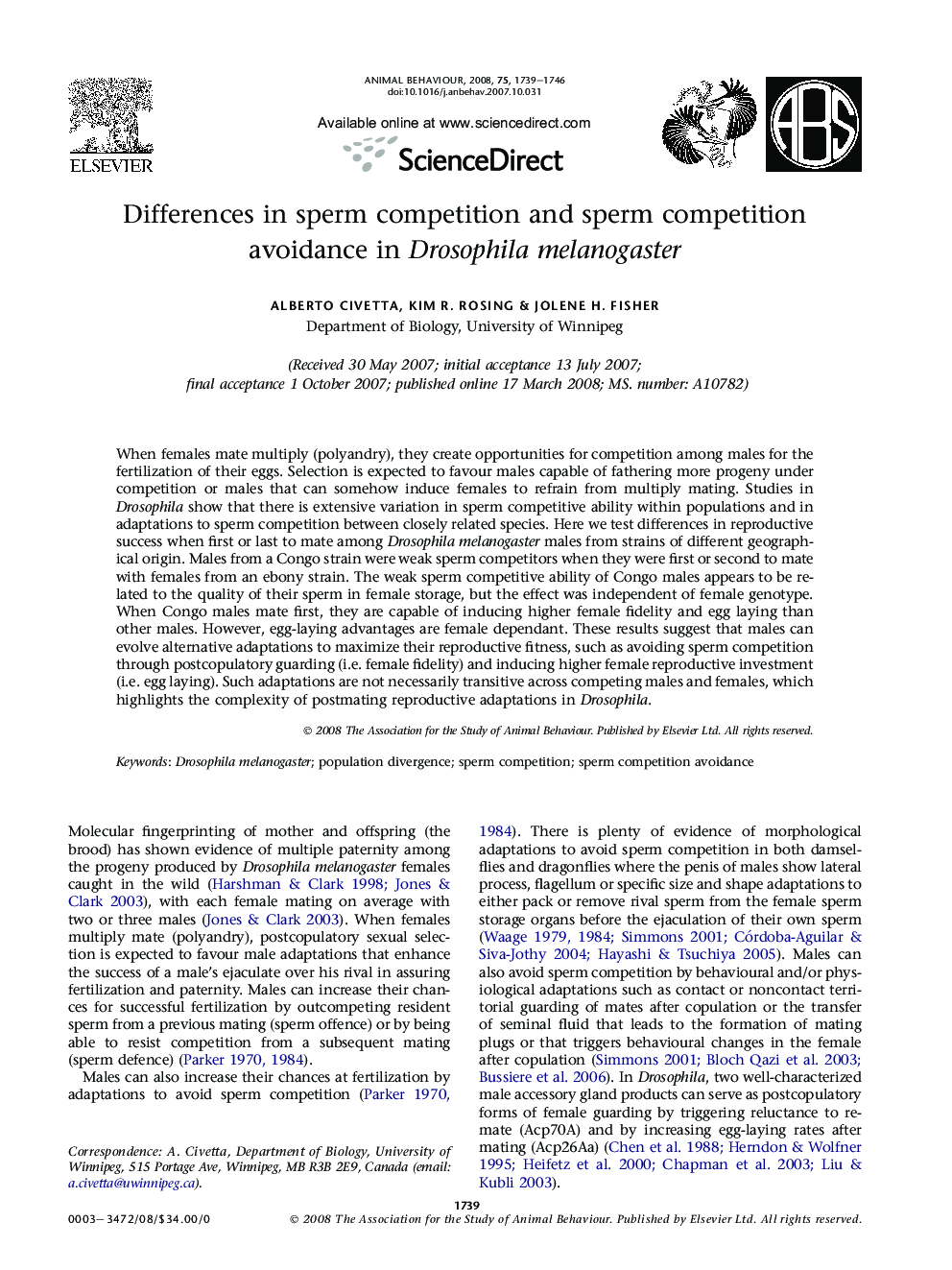| کد مقاله | کد نشریه | سال انتشار | مقاله انگلیسی | نسخه تمام متن |
|---|---|---|---|---|
| 2417523 | 1104321 | 2008 | 8 صفحه PDF | دانلود رایگان |

When females mate multiply (polyandry), they create opportunities for competition among males for the fertilization of their eggs. Selection is expected to favour males capable of fathering more progeny under competition or males that can somehow induce females to refrain from multiply mating. Studies in Drosophila show that there is extensive variation in sperm competitive ability within populations and in adaptations to sperm competition between closely related species. Here we test differences in reproductive success when first or last to mate among Drosophila melanogaster males from strains of different geographical origin. Males from a Congo strain were weak sperm competitors when they were first or second to mate with females from an ebony strain. The weak sperm competitive ability of Congo males appears to be related to the quality of their sperm in female storage, but the effect was independent of female genotype. When Congo males mate first, they are capable of inducing higher female fidelity and egg laying than other males. However, egg-laying advantages are female dependant. These results suggest that males can evolve alternative adaptations to maximize their reproductive fitness, such as avoiding sperm competition through postcopulatory guarding (i.e. female fidelity) and inducing higher female reproductive investment (i.e. egg laying). Such adaptations are not necessarily transitive across competing males and females, which highlights the complexity of postmating reproductive adaptations in Drosophila.
Journal: Animal Behaviour - Volume 75, Issue 5, May 2008, Pages 1739–1746